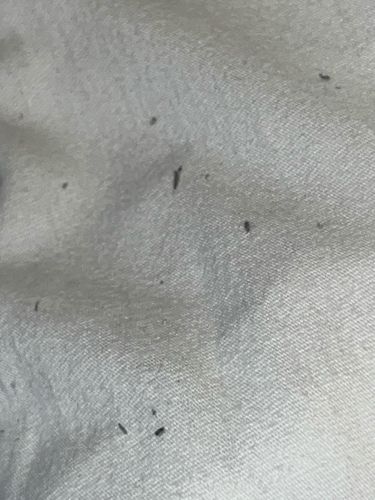Flea (Flea dirt/excrement)
Scientific Name: Though the image shows flea dirt (excrement), the most common species associated with household infestations are Ctenocephalides felis (cat flea) or Ctenocephalides canis (dog flea).
Order & Family: Order: Siphonaptera, Family: Pulicidae (e.g., Ctenocephalides felis for cat flea, Ctenocephalides canis for dog flea)
Size: Flea dirt specs are typically 0.5-1 mm in length. Adult fleas themselves are 1-3 mm (0.04-0.12 inches) long.

Natural Habitat
Fleas live on the bodies of their hosts (pets, wild animals, humans) and in the environment where their hosts spend time, such as carpets, bedding, cracks in floors, and pet resting areas.
Diet & Feeding
Adult fleas feed exclusively on the blood of mammals and birds.
Behavior Patterns
Fleas are excellent jumpers, able to leap great distances relative to their size. They are parasitic and spend much of their time on their hosts, feeding on blood. Their life cycle includes eggs, larvae, pupae, and adults. Eggs are laid on the host but fall off, developing in the environment. Larvae feed on organic debris, including adult flea feces (flea dirt), and then pupate. The pupal stage is resistant to insecticides and can survive for many months, emerging as adults when they detect a suitable host.
Risks & Benefits
Risks: Fleas can cause intense itching, skin irritation (flea allergy dermatitis), and secondary bacterial infections due to scratching. They are also vectors for diseases such as murine typhus and the plague, and can transmit tapeworms (Dipylidium caninum) to pets and humans. Benefits: None for humans; they are a food source for some predators in the ecosystem.
Identified on: 8/31/2025